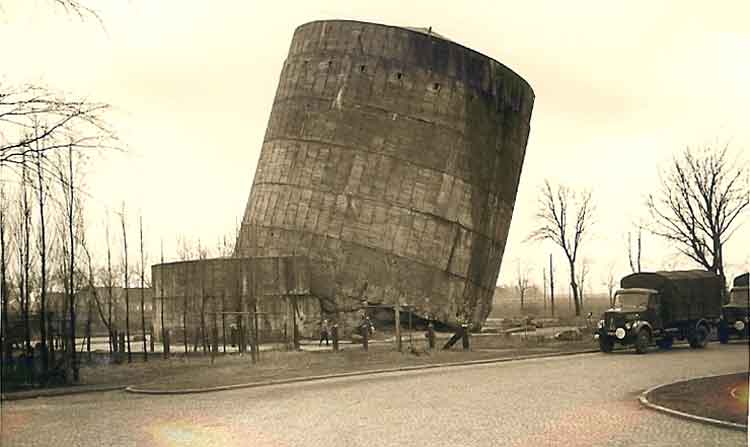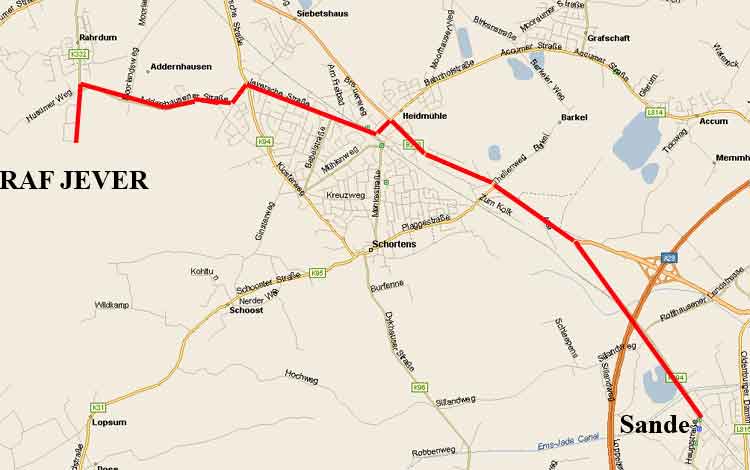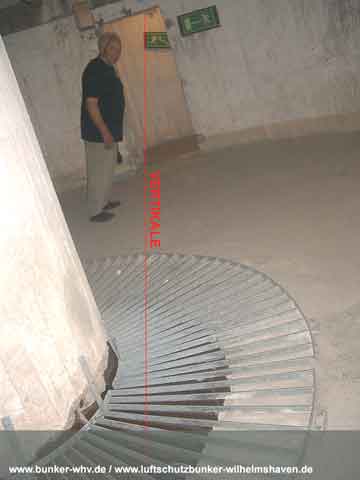

Partly Demolished Bunker near Sande Railway Station
 Route from Sande Railway Station to RAF Jever - one taken by everyone who arrived by rail.
Route from Sande Railway Station to RAF Jever - one taken by everyone who arrived by rail.
Full Story of the Bunker

Over the past few years we have received the above pictures of this partly demolished structure near to the railway station at Sande. There was speculation about whether it was a flak tower or an air-raid shelter. Very kindly
Marcus Christ, who's father worked at Jever and he was brought up in the area, contributed the following explanation of its history and current use.
 Marcus
Marcus says: "Recently you asked about the air raid shelter next to Sande railway station.

I might have told you that I took part in a summer holiday scheme in the Harz mountains in 1984 and 1985. This was organized by the British Army for the children whose parents were serving in the Rhine Army in those days. We enjoyed loads of activities including rock-climbing. After that I decided to continue with some climbing. Being aware of the lack of rocks in Friesland my friend discovered an attractive alternative. The "Deutscher Alpenverein" of Wilhelmshaven bought this Bunker to provide a rock-climbing training facility.


So we joined the party by drilling holes, dismantling and demolishing parts. It was an adventure to work inside or on the very top of it. Eventually in 1986 the Bunker was ready for the new purpose - and it still is.


As far as I know it was an air raid shelter and not a gun tower. The holes were not embrasures (right term for it?) but part of the sophisticated ventilation system (you can't look through them). It used to have its own water supply system with a well 176m deep and even toilets.



The bunker had six floors. The four upper floors were for the civilian inhabitants of Sande (up to 500 persons) and the lower ones for the staff of the Flak Guns. That might be a reason why this shelter is considered to be a gun tower. It is more likely that right next to it might have been a cannon to cover Wilhelmshaven but not in it.

I forgot to mention that the shelter was built from 1940 to 1943. The Brits tried to demolish this massive block of concrete in 1947, obviously with some success: The bunker couldn't be used for its original purpose any more.

Unfortunately I haven't been there since 1988 so I don't know the newest developments. But the more or less funny thing is that after it was a climbing attraction for a couple of years it became a listed building in 1999.

What I actually do not know is why this should have been destroyed? Was it to de-militarize Germany completely? Even the more "passive" defensive installations? In fact the shelters were no threat for the allied forces which occupied Germany in those days. Or did the shelter symbolize the Nazi-regime in any way? That could be an answer but I don't know the reason of this policy, do you?
Click to see aerial shots of similar structures in Wilhemshaven